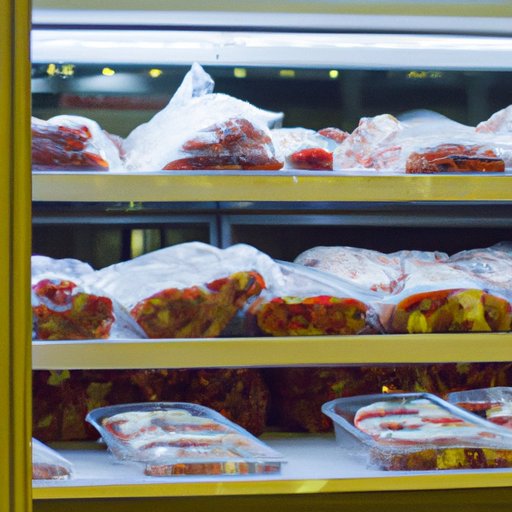Introduction
Raw meat is an essential ingredient in many meals, but it must be handled and stored properly to ensure that it is safe for consumption. Properly shelving raw meat prior to cooking is essential for preserving its freshness and preventing the growth of bacteria that can cause food poisoning. This article will explore the do’s and don’ts of storing raw meat, as well as best practices for shelving raw meat before cooking.
The Do’s and Don’ts of Storing Raw Meat
The most important rule to remember when storing raw meat is that it should always be kept at the correct temperature. Raw meat should never be left out of the refrigerator or freezer for more than two hours, as this can quickly lead to bacterial growth. Additionally, raw meat should never be stored near ready-to-eat foods, such as fruits, vegetables, or cooked dishes.

A Guide to Storing Raw Meat Before Cooking
When storing raw meat in the refrigerator, it should be placed on the bottom shelf, away from any ready-to-eat foods. This helps prevent cross-contamination, as juices from the raw meat could drip onto other foods. Additionally, the refrigerator should be set to 40°F or below to keep the raw meat fresh. When storing raw meat in the freezer, it should be placed on the bottom shelf and wrapped securely in plastic wrap, aluminum foil, or an airtight container.
To help keep raw meat fresh until it is ready to be cooked, there are several additional steps that can be taken. First, raw meat should be purchased just before it is needed and used within two days of purchase. Second, the packaging of the raw meat should be checked for any signs of spoilage or contamination. Finally, raw meat should be thawed slowly in the refrigerator or in cold water, and not left at room temperature.
Best Practices for Shelving Raw Meat Before Cooking
When shelving raw meat before cooking, it is important to separate it from other foods. This helps prevent cross-contamination, which can occur when juices from the raw meat come into contact with other foods. Additionally, it is important to use appropriate containers for storing the raw meat. Plastic bags, aluminum foil, or airtight containers are all acceptable options. Finally, raw meat packages should be labeled and dated to ensure they are used within two days of purchase.
Conclusion
Storing and shelving raw meat correctly is essential for ensuring that it is safe for consumption. Following the tips outlined in this article can help ensure that raw meat is stored and shelved correctly. Be sure to store raw meat at the correct temperature, separate it from other foods, and use appropriate containers for storage. Finally, always label and date raw meat packages so that they are used within two days of purchase.


